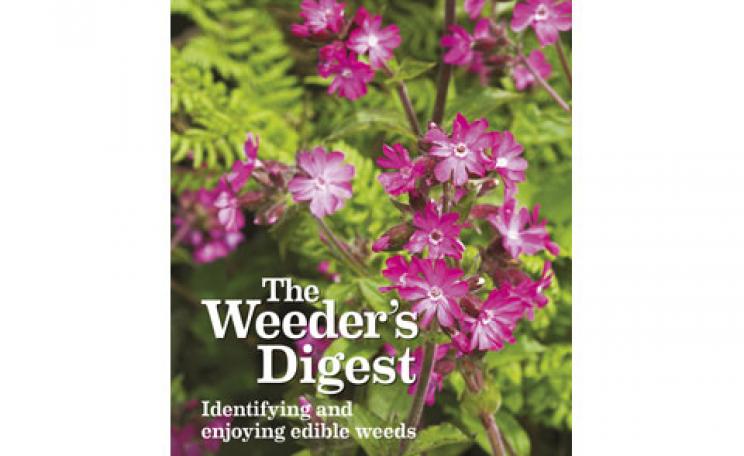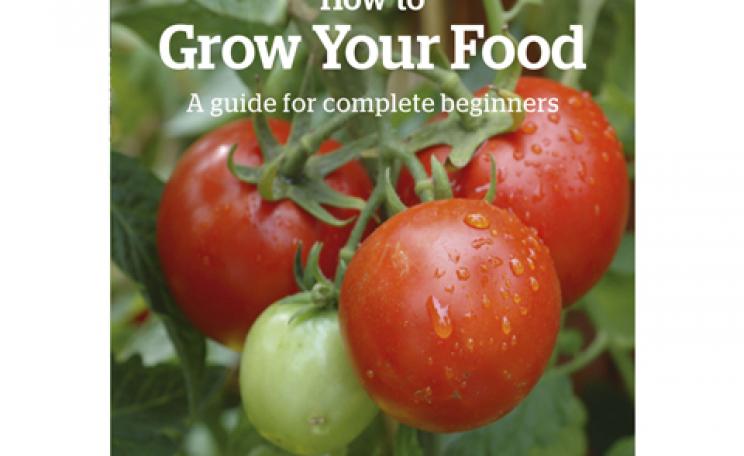If you grow any of your own food, you'll be familiar with the peculiar blank look that appears on the faces of non-gardeners when you let slip that you're fretting about frost, or looking forward to getting your sweetcorn in at the weekend. I imagine Martin Crawford gets that look a lot when he talks to regular gardeners about his new book, How to Grow Perennial Vegetables, because most of us aren't all that familiar with the topic. When pressed we could probably only think of a few reoccurring crops; asparagus, globe artichokes, and that's about it.
How to Grow Perennial Vegetables isn't the first book that deals with growing in the UK but it is the first one to offer such a wide spread of unusual plants that can be grown in a bed or border as a really practical alternative to ornamental flowers and shrubs. After reading it, I'm pleased to report that I'm feeling quite enthused about the possibilities of integrating some perennials into my plot without feeling I have to move towards a forest garden model (which, frankly, has always daunted me).
As the owner of what is probably the finest temperate-zone forest garden anywhere on the planet, Martin Crawford really knows his Welsh onions. He's up-front about why commercial growers haven't shown much interested in perennials in the past (harder to weed, lower output per hectare) but equally candid about the benefits (such as reduced carbon emissions from tillage). Perennial gardening may give less food per plant than conventional annual growing but it's also a lot less work and doesn't need the huge input of compost each year that no-dig does. Grouped together properly, a perennial bed largely looks after itself with only minimal intervention.
While I was waiting for my review copy to arrive I made a short list of the things that have put me off these unfamiliar plants in the past. Lack of familiarity is of course the top of my list but there's also how to group them properly, which is much more important for plants that are going to be around for years than it is for annuals. Then there's the trick of how to get some of these tricky seeds to germinate in the first place - how many of us would have the confidence to pour nearly boiling water over seeds, as you have to with some perennial legumes?
Happily, I found myself crossing my misgivings off the list one by one. Martin Crawford has clearly thought things through very carefully, and has skillfully constructed a bridge between the forest gardener and traditional grow-your-own bodgers like myself. I've always struggled to motivate myself to look after areas of the garden that don't feed the family but the information in the early sections of this book should help me to phase out fussy ornamentals in favour of low-maintenance edibles that fill all the same niches, and look good to boot. Provided, the author stresses, I don't want it all to look neat and tidy.
The lion's share of the book, though, is devoted to an A to Z of the perennial vegetables themselves. These have had to be kept quite brief, because there are more than a hundred of them. Each plant has a short description, remarks on planting and cultivation, instructions on when and how to harvest, and lastly some culinary uses. Because of the sheer volume of plants, the culinary tips are quite short and it's here, I think, that the book is at its weakest. Cooking vegetables may not be rocket science, but lack of experience with these unfamiliar harvests is one of the things that puts people off. Recipes for some of the more important plants, or even a sample meal with mouthwatering photographs, would have made all the difference for me.
The A to Z part more than makes up for this omission with its sheer scope. It covers not only well-known perennials like rhubarb, asparagus and globe artichokes but also wild plants such as nettles and ramsons and plenty of real exotics too, like oca and the much under-rated sea buckthorn. Even this staggering list has barely scratched the surface of Crawford's encyclopaedic knowledge of edible perennials, as visitors to his website will soon find out. Perennial vegetables may never replace the staple crops that the world depends on but they certainly deserve to have a bigger space on our plates. If you're prepared to grub out some unproductive ornamentals and pop in a few long-lived food plants instead, How to Grow Perennial Vegetables will show you how. Oh, and the hostas? You can leave them. Apparently the young leaf clusters are delicious.
How to Grow Perennial Vegetables: Low maintenance, Low impact Vegetable Gardening by Martin Crawford (£14.95, Green Books) is available from Amazon
Andy McKee co-produces the self-sufficiency website FarmInMyPocket.com
| READ MORE... | |
 |
REVIEW Learning from the Octopus Did you know that the humble octopus can teach us how to prevent security threats or deal with natural catastrophes? Nor did Rachael Stubbins until she read Rafe Sagarin’s new book |
 |
REVIEW The Great Animal Orchestra: Finding the Origins of Music in the World's Wild Places Bernie Krause has spent a lifetime recording the sonics of nature. But, as Laurie Tuffrey finds, his quest to record the elusive sound of the wild finds practical application in conservation |
 |
REVIEW The Naturescaping Workbook: A Step-by-Step Guide for Bringing Nature to Your Backyard Beth O’Donnell Young’s opus urges us to dispense with our prim patios and manicured lawns, and let nature in. |
 |
REVIEW The Self-Sufficiency Manual: A Complete Practical Guide to Living Off the Land Alison Candlin’s opus does the basics brilliantly but doesn’t go into enough depth for Mark Newton |
 |
REVIEW How to Make and Use Compost - The Ultimate Guide Packed with useful advice, Nicky Scott’s ultimate guide to compost is essential reading for professional and amateur gardeners alike, says Mark Newton |








